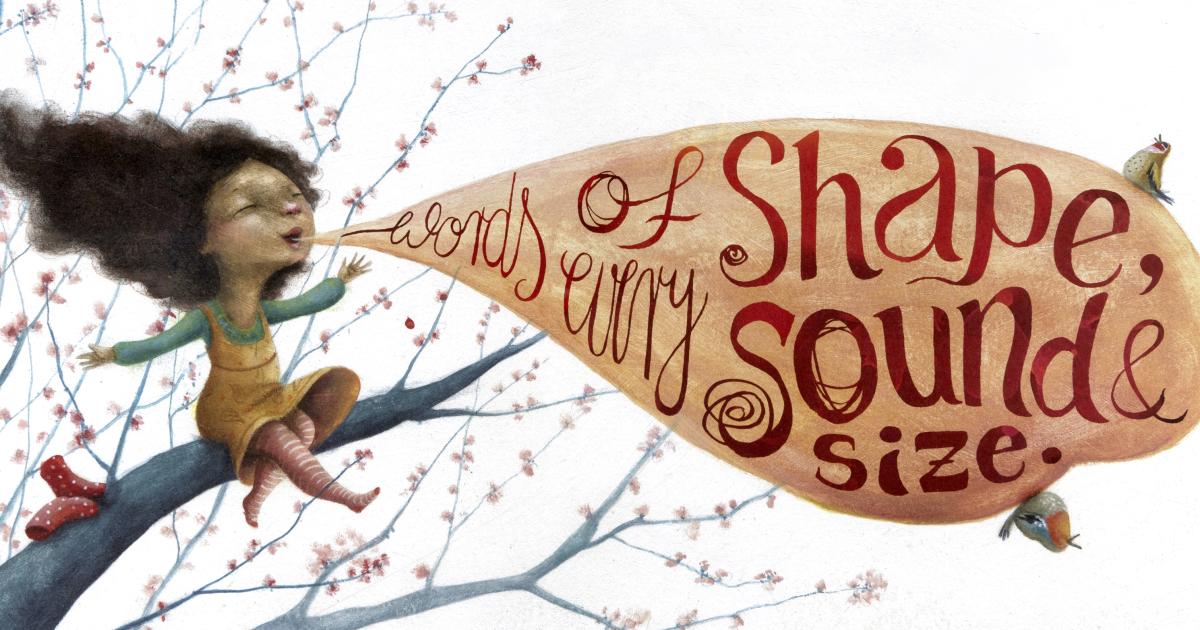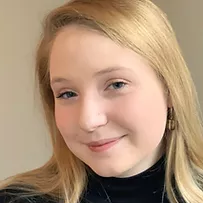Through May 1, The Eric Carle Museum in Massachusetts has a special exhibit called “Read the World: Picture Books and Translation,” curated by Professor Regina Galasso and the students in her course at University of Massachusetts Amherst. Today we talk to Professor Galasso and her student, Caroline Seitz…

WKL: Please tell us about yourselves and your interest in translation?
Regina Galasso: I am interested in creating and supporting ways to make translation more visible to the general public to encourage a greater understanding and appreciation of translation as a needed service and intellectual activity. When people hear that I translate and teach and write about translation, they say “you must know many languages!” I would love for more people to know that thinking and learning about translation is not something reserved for people who know many languages. The more people know about translation, the greater their awareness will be of language, of what happens when languages come into contact, and of what happens when a translator takes what is written in one language and writes it in another. Translation provides language access to people who need to receive written communication in a language they can fully understand. Translation also gives people exposure to languages that they do not know, reminding them of some of the other people with whom they share the world, and possibly inspiring them to learn another language.
Caroline Seitz: I am a student in my final year at Amherst College where I study literatures, languages, and cultures from the Spanish-speaking and English-speaking worlds. I am particularly interested in American Southern Gothic literature, women’s voices, and translation. Above all, I am passionate about accessibility in storytelling.
WKL: Could you tell us more about this project?
RG: I work with Massachusetts schools to improve language access services for families. In order to do this, it is not only up to translators and interpreters to do their work well. We need to expand translation education so that everyone in the community can support efforts to provide quality translation and interpretation in schools and everywhere. That led me to think about new avenues for university students to support translation activities. I wanted to work on a multifaceted project with students that would allow us to be translation ambassadors. I taught a course “Translation Roots of a U.S. Literary Landscape.” That’s how I met Caroline Seitz and her classmates, the other curators of “Read the World: Picture Books and Translation.”
CS: Our course readings gave us an understanding of translation and multilingual writers, and their importance in our literary landscape. Our exhibition does not simply aim to display translated works, but also provides resources to build understanding and appreciation of translators and translation. The course was conducted in Spanish, but we communicated in English with the Museum and publishers. This experience heightened the importance of the exhibition for us. We saw how multiple languages co-exist both in practice and on the pages of the books in the exhibition.
WKL: How and why did you choose the languages to showcase?
RG: The students began their search for picture books translated from any language into English published within the past five years or so. The students’ individual tastes guided the initial search. Because of the students’ interest in Spanish, books that had been translated from Spanish appeared more than any other language. We would talk about the books, keeping some for the list and moving others for another time. The students suggested multilingual books. Multilingual books remind us that even though translation gives us books that were born in a language we do not read in a language we do read, translation is about having awareness of languages other than the ones we know. Recognition of those languages might lead us to language learning. The section “See Languages” features multilingual books. Articulating this section’s aim and relationship to translation in a description, was one of the most challenging and revealing moments in our preparation.
WKL: How did you choose the particular books?
RG: The Eric Carle Museum gave us the structure of the exhibition: one main theme, three subthemes, and about 12 to 15 titles in each section. We put this exhibition together when Covid restrictions did not allow students all the freedoms they previously had. No weekend trips to bookstores. We even had to get special permission to get off campus to visit the Eric Carle Museum, a few miles down the road. Choosing the exhibition’s theme, subthemes, and picture books all happened simultaneously at first. We discussed what we wanted to share about translation with the general public, and shared with each other the picture books that had interested us. The students found book lists and reviews via sources on the internet. We took recommendations from classroom guests. The Eric Carle Museum suggested titles. As the book list grew, the theme and subthemes emerged. The subthemes–”Meet Translators,” “See Languages,” and “Expand the Story”–as well as a desire to represent many languages, while honoring our personal preferences, influenced our final selection.
In “Meet Translators,” how would we emphasize translators as key players in the book world since all the books in the exhibition have at least one translator? We chose four translators who have dynamic professional profiles. Ruth Ahmedzai Kemp, Daniel Hahn, Lawrence Schimel, and Helen Wang were selected for several reasons including their books already being part of the book list and because of the variety of languages they collectively represent.
We included surprises to touch on the complexities of translation. In “Meet Translators,” we have Lawrence’s book Bedtime, Not Playtime in Catalan, English, and Spanish. Each language has its own book and all three are by Lawrence. Our visitors might ask “Which did Lawrence write first?” “Is he the translator of the subsequent versions?” In “See Languages,” we include a bilingual book in French and Arabic as a reminder that not everything is always in English. Our visitors who do not know French and Arabic might ask themselves what it is like to confront a text they cannot read. How does it feel when translation is not available when you need it?
WKL: What has the response been?
RG: The larger community is supportive and has been asking if we would consider expanding the exhibition. When we presented the exhibition to the Eric Carle Museum staff, questions came up about cataloging translations. The early invitation from Patricia Billings, a trustee of Outside in World, and Professor Sophie Heywood, co-director of the Centre for Book Cultures and Publishing at the University of Reading, to present the exhibition on its opening day via a webinar was exciting!
I heard from David that museum visitors seem most excited about the books themselves, especially multilingual titles from the “See Languages” section. Visitors from our multilingual community have expressed appreciation for seeing their home languages represented on the shelves! Visitors have been curious about how we found and acquired the titles included in the show, and where they can go to find more multilingual books.
WKL: Is this a model that others might follow?
RG: We would love for other libraries, classrooms, and households to have a version of “Read the World” in their own spaces! The exhibition’s title, introduction, section titles and descriptions travel well. Each new curator could select books to populate the sections depending on the location and time of the exhibition. The exhibition can also travel beyond English. On the Eric Carle Museum’s website, the exhibition text in addition to other educational resources are available in Chinese, English, Japanese, Korean, and Spanish. New editions of the exhibition would be a great way to add more translators, more languages, more publishers, more curators, more audiences!
CS: We created various educational resources, keeping both the variety of ages of the Eric Carle Museum’s visitors and the role of adult co-readers in mind. All the activities are available in the Reading Library and some are online.
“Take a Closer Look!” encourages participants to think more broadly about how words, illustrations, and translations all function together in a book.
“Construction Site: Language in Building Blocks,” inspired by Javier Calvo’s El fantasma en el libro: la vida en un mundo de traducciones, invites visitors to use wooden blocks to build a given Lego house to give a sense of how translation works.
“Try Translation! Drawing Game” invites visitors to illustrate a given sentence to understand that the many different drawings that can be made from that one sentence are similar to how there can be as many different translations of the same text as there are readers of that text.
“Guide: Discussing Translation with Young Readers” helps adult co-readers understand the importance of picture books and translation that can be used with any translated picture book.
***
Eric Carle Museum of Picture Book Art: “Translating Picture Books”
28 April 2022, 4-5pm UTC
Regina Galasso will be hosting a free online discussion event with the four literary translators whose translations were featured in the ‘Meet the Translator’ section of the exhibition. Join Ruth Ahmedzai Kemp, Daniel Hahn, Lawrence Schimel, and Helen Wang as they answer questions about being a translator and the translation of picture books. Free event. Sign up here
***

Regina Galasso is a scholar, translator, and educator. Her work highlights the role of translation in literary histories and contemporary culture. She creates and supports ways to promote translation education to encourage greater understanding of this needed service and intellectual activity. She works with school districts to improve their language access services and initiatives. She is writing on a picture book on translation. She is Director of the Translation Center and Associate Professor in the Spanish and Portuguese Studies Program at the University of Massachusetts Amherst and can be reached at rgalasso@umass.edu.

Caroline Seitz is a Spanish and English major at Amherst College originally from Nashville, Tennessee with interests in contemporary Southern literature, women’s voices, and Spanish-language texts. She has interned for Triada US literary agency and written several short stories, essays, and multi-genre works. She is active in the Amherst theatre community. She is working on a novella re-imagining of Miguel de Cervantes Don Quixote that takes place in Tennessee in the 1970s. Caroline is committed to making stories accessible.
